This is a Dictograph handset for the internal telephone system of an office. We now use it as the main telephone in the hall of our house.
I can find few details of when or where it was made. From the look of the electrical technology, I'd say it is from the 1930s although it may have been made in the 1940's to an out-of-date design. It was probably made in one of their British factories in Croydon or Wimbledon. A history of Dictograph can be found here.
Internal telephones have the advantage of lots of switches or buttons. It's fairly straightforward to convert them to modern DTMF (Touch-Tone) dialling. (Although rotary phones can be connected to many modern exchanges, they're no good when you want to connect to the computer in your bank: "press 3 to hear your account details" doesn't work.)
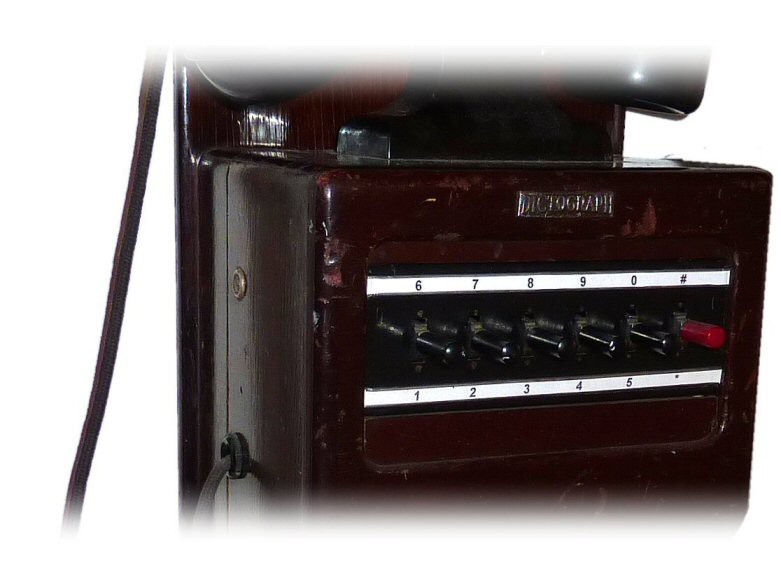
This phone has 6 switches which lock in the up or down position to talk to one of 12 departments in an office.
I carefully removed the internal wiring and the switch locking mechanism (it could be retored in the future). Then I connected the existing switches to bridge the button contacts of a 1980s DTMF telephone.

I chose to use the electronics from a BT Tribune I found in a skip.
A Tribune has a real bell - not a warble. A bell sounds much better for an old phone. Unfortunately, a Tribune doesn't have a quick-dial facility but I didn't have enough switches on the Dictograph for "Store" and "Dial" anyway.
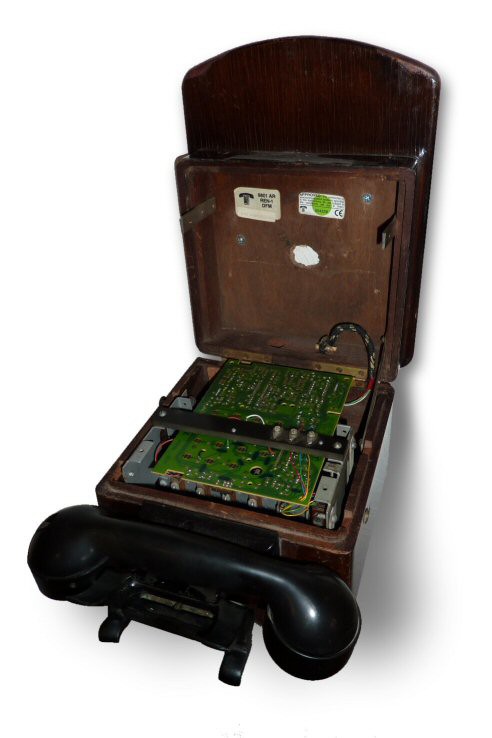
The electronics of a Tribune is rather large but the Dictograph has plenty of room. The cord from the Tribune is covered with the braid from an electric iron of the 1960s. The microphone and speaker are taken from the Tribune but the handset cord is the original from the Dictograph.

The keypad of the Tribune is a 3x4 switch-matrix - all modern telephones seem to use a matrix. I reverse-engineer a keypad by taking a photo and adding labels to it. You can see in this photo that if a button were to connect pins 4 and 5, it would dial a '0'.

I added a pre-war bakelite notepad to the side which complements the phone nicely.
The phone has been a great success. It works flawlessly and everyone who sees it thinks it looks great. It took us a while to get used to the way you dial - by flipping switches - but now we're as fast as with a normal phone.
AEI Desk Telephone
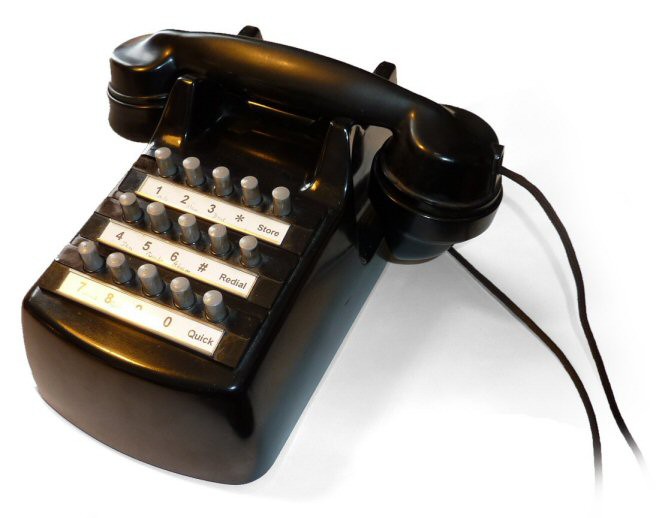
This is an AEI desk telphone for an internal telephone system. It's the telephone I use every day on my workdesk.
From the look of the electrical technology, the telephone was probably made in the 1950s. AEI made telephones from their founding in 1929 until their merger with GEC in 1967. AEI branded telephones were produced for some years after that.
As is usual with internal telephones, each button calls a different department. The buttons lock down and are released when you hang up. The huge cable coming out of the back had a separate pair of wires for each department.
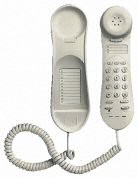
I carefully removed the internal wiring and the locking mechanism (they could be restored later). I then fitted the electronics from a BT Duet telephone. There's not a lot of space in the AEI phone and the Duet has a small pcb.
The Duet has a warble rather than a bell - a bell would be more in keeping with the phone but I felt that a warble was less intrusive for a desk phone
I soldered wires onto the button pads of the duet and connected them across the switches of the AEI phone. The Duet has a quick-dial facility and the AEI phone has just the right number of buttons for 0 to 9, #, *, Redial, Store and Quick-Dial.
The handset cord is modern shielded 4-core cable covered with a shoelace.
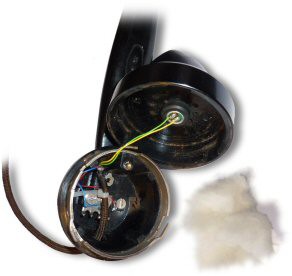
In the handset, I replaced the old carbon microphone with the electret mic from the Duet, along with its rubber cup. There's a lot of space in the microphone cavity which made the new microphone sound as though you had your head in a bucket. Padding the cavity with cotton wool fixed it.
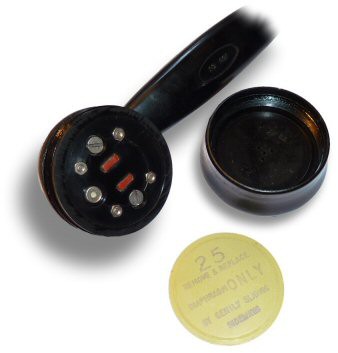
The original speaker is moulded into the bakelite handset. Removing it and fitting a modern speaker...
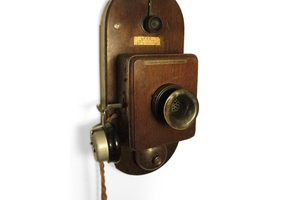

 Michael Gardi
Michael Gardi
 Steph
Steph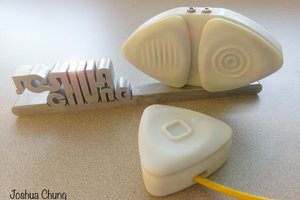
 Joshua Chung
Joshua Chung